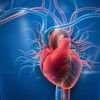How Diet Affects Cholesterol Levels and Heart Disease Risk
- Understanding Cholesterol and Heart Disease
- The Impact of Diet on Cholesterol Levels
- Foods That Can Lower Cholesterol
- Real-Life Examples and Case Studies
- How to Incorporate Healthy Diet Changes
- Conclusion
1. Understanding Cholesterol and Heart Disease
Cholesterol is a waxy substance that is essential for building healthy cells, but when present in excess, it can increase the risk of heart disease. Cholesterol travels through the bloodstream in two main forms: low-density lipoprotein (LDL), often referred to as "bad cholesterol," and high-density lipoprotein (HDL), known as "good cholesterol." A balance between these types of cholesterol is crucial for maintaining optimal heart health. High LDL levels can lead to plaque buildup in the arteries, which increases the risk of heart attacks and strokes.
2. The Impact of Diet on Cholesterol Levels
Diet plays a significant role in determining cholesterol levels in the body. Certain foods can contribute to high cholesterol, while others can help reduce it. For instance, saturated fats and trans fats found in processed foods and fatty meats can raise LDL cholesterol. On the other hand, foods rich in fiber, healthy fats, and plant-based proteins can help lower cholesterol and improve heart health. A diet high in fruits, vegetables, whole grains, and lean proteins has been shown to lower LDL levels and reduce the risk of heart disease.
3. Foods That Can Lower Cholesterol
When it comes to managing cholesterol levels, some foods are particularly effective. Here are a few:
- Oats: Oats contain soluble fiber, which binds to cholesterol and helps remove it from the body.
- Fatty fish: Rich in omega-3 fatty acids, fish like salmon, mackerel, and sardines help lower triglycerides and improve heart health.
- Nuts: Walnuts, almonds, and other nuts are high in healthy fats that help reduce LDL cholesterol.
- Olive oil: This healthy fat is great for replacing saturated fats and can help lower cholesterol when used in place of butter or other oils.
- Beans and legumes: These plant-based proteins are high in soluble fiber, which helps to reduce cholesterol levels.
4. Real-Life Examples and Case Studies
Let's look at some real-life examples of how diet changes can lead to improved cholesterol levels and heart health. One notable case involves a man in his 50s who was diagnosed with high cholesterol and was advised by his doctor to make dietary changes. After switching to a diet rich in whole grains, leafy greens, and fatty fish, he was able to lower his LDL cholesterol by 20% within six months. Similarly, a woman in her 40s, who struggled with heart disease risk factors, incorporated more nuts and olive oil into her daily meals, resulting in a noticeable decrease in her cholesterol levels.
5. How to Incorporate Healthy Diet Changes
Making dietary changes may seem challenging at first, but with small steps, anyone can improve their cholesterol levels and heart health. Start by gradually swapping out unhealthy fats for healthier options, such as replacing butter with olive oil. Include more fiber-rich foods like oats, beans, and vegetables in your meals, and aim to eat at least two servings of fatty fish each week. Remember, consistency is key, and over time, these simple changes can have a significant impact on your cholesterol levels and overall health.
6. Conclusion
In conclusion, diet plays a crucial role in managing cholesterol levels and reducing the risk of heart disease. By choosing heart-healthy foods and making conscious changes to your eating habits, you can significantly improve your cholesterol profile and overall heart health. If you're looking to start your journey towards a healthier heart, consider incorporating foods like oats, fatty fish, and nuts into your diet. For more personalized advice and heart-healthy products, explore options that align with your health goals and dietary preferences.




















